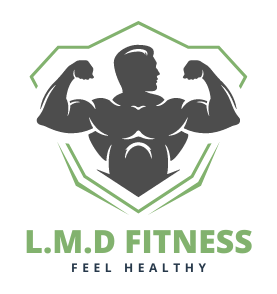
In the ever-evolving world of activewear, the demand for hypoallergenic materials in fitness apparel has surged, driven by a growing awareness of skin sensitivities and the pursuit of uncompromised comfort. For fitness enthusiasts, the right gear isn’t just about style or sweat-wicking prowess—it’s about fostering a symbiotic relationship between fabric and physiology.
Understanding Hypoallergenic Textiles: Beyond the Basics
Traditional workout clothing often relies on synthetic fibers like polyester or nylon, which, while durable, can harbor irritants such as chemical dyes, formaldehyde resins, or residual detergents. Hypoallergenic materials in fitness apparel, by contrast, are engineered to minimize these risks. These fabrics undergo rigorous processing to eliminate allergens, employing techniques like Oeko-Tex® certification, which ensures textiles are free from harmful substances.
Key characteristics of these materials include:
- Low irritant potential: Absence of abrasive fibers or toxic finishes.
- Breathability: Enhanced airflow to reduce moisture buildup, a common trigger for dermatitis.
- Antimicrobial properties: Natural or treated fibers that inhibit bacterial growth, preventing odor and infections.
Top Hypoallergenic Materials in Fitness Apparel Redefining Activewear
1. Organic Cotton: The Timeless Champion
While conventional cotton is pesticide-laden, organic cotton is cultivated without synthetic chemicals. Its soft, non-abrasive texture makes it ideal for sensitive skin. Innovations like mechanically processed cotton retain natural oils, further reducing allergenicity.
2. Bamboo Viscose: Nature’s Antimicrobial Wonder
Bamboo-derived fabric boasts inherent hypoallergenic traits. Its micro-gaps enhance moisture-wicking, while bamboo kun—a natural antimicrobial agent—combats pathogens. The result? A breathable, odor-resistant layer perfect for high-intensity sessions.
3. Merino Wool: The Temperature-Regulating Marvel
Contrary to misconceptions, ultrafine merino wool is luxuriously soft and non-irritating. Its lanolin-free variants are processed to remove allergenic proteins, making it a stellar choice for temperature-sensitive workouts.
4. Tencel™ Lyocell: The Eco-Conscious Contender
Sourced from sustainably harvested wood pulp, Tencel™ is silky, biodegradable, and resistant to microbial growth. Its closed-loop production ensures minimal chemical residues, aligning with hypoallergenic and eco-friendly principles.
5. Polygiene®-Treated Synthetics: The Hybrid Solution
For those unwilling to sacrifice performance, Polygiene® treatment infuses synthetics with silver salt technology. This inhibits odor-causing bacteria without compromising elasticity or moisture management.
The Science Behind Skin-Friendly Activewear
The epidermis, our body’s largest organ, is a dynamic barrier susceptible to inflammation from friction, heat, and chemical exposure. Hypoallergenic materials in fitness apparel mitigate these triggers through:
- pH-balanced finishes: Aligning with the skin’s natural acidity (pH 4.5–5.5).
- Seamless construction: Reducing chafing points.
- Dye-sub printing: Using non-toxic, pigment-based inks instead of reactive dyes.
Studies reveal that 60% of athletes with sensitive skin report fewer rashes when switching to hypoallergenic gear. This underscores the importance of material selection in preventing contact dermatitis and folliculitis.
How to Choose the Right Hypoallergenic Fitness Apparel
- Check Certifications: Look for Oeko-Tex®, GOTS, or Bluesign® labels.
- Prioritize Natural Fibers: Opt for organic, unbleached fabrics.
- Avoid Harsh Elastanes: Some spandex blends contain latex—a common allergen.
- Test for Fit: Snug but non-constrictive cuts prevent friction-induced irritation.
The Future of Hypoallergenic Activewear
Emerging technologies like biofabrication—lab-grown textiles from microbial cellulose—promise allergen-free alternatives. Brands are also exploring self-cleaning fabrics embedded with photocatalytic nanoparticles, reducing reliance on detergents that residue can irritate skin.
